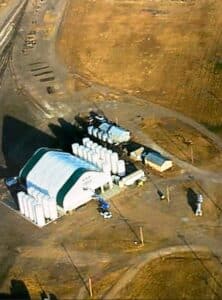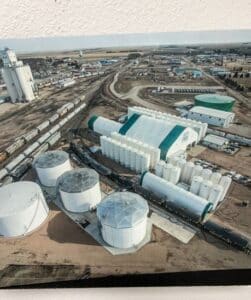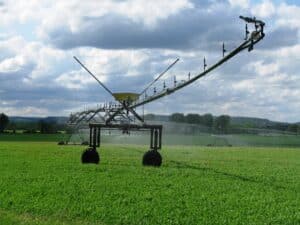Another day, another chance to grow!
Bill Spiegel hosted agronomic experts Stephanie Zelinko of AgroLiquid and Layne Miles of XtremeAg. They discussed how to look at your own operation through the lens of its collected data and adapt your crop nutrition plan to your fields’ exact needs.
Of course – every farmer is looking at every other farmers’ field. While it’s tempting to adopt practices on neighboring farms, the reality is that each field is different. Testing and data help growers make the best decisions, yield, and profit.
How can growers use data in crop nutrition management? Let’s explore:
Specific land qualities
Stephanie and Layne emphasized that what works for one farm might not work for another due to variations in historical management practices, soil types, and environmental conditions. Stephanie gave a specific example of a farmer who purchased land adjacent to his, which he thought would have similar qualities. However, the soil test results were dramatically different due to past management.
“Again, you don’t know those management practices of all your neighbors, and so if you don’t know what they’re doing, it’s really hard …you need to make sure you know what’s working and test it yourself before you make those decisions,” Stephanie said.
Soil testing
Stephanie emphasized that a current and complete soil test is the best starting point for any crop nutrition program. It provides a baseline understanding of what nutrients are present and what might be needed for the best crop performance.
On-farm research
Both experts suggest that conducting on-farm trials lets growers see for themselves how different approaches perform under their specific conditions. Layne shared his practice of testing new ideas on a limited acreage using replicated strips to account for field variations.
“If it’s something new, I don’t like to go out and do 200 or 300 acres without knowing what I’m spending,” he said. He explained that you can understand your standard practice costs and returns, know what you spend on the new practice, and therefore can calculate your actual ROI.
Stephanie agreed, suggesting that new practices be tried on 20 acres – enough to get a good yield reading, but not devastating if it doesn’t perform as well as the grower wants.
ROI
The most important measure of a successful nutrition program is its return on investment. Stephanie pointed out that while a practice might increase yield, growers need to determine if the added cost justifies the gain.
“When you farm you know it’s going to come down to that return on investment,” Stephanie said. “So fertility programs are a big portion of a grower’s budget – anywhere between 16 and 22 percent of the anticipated income typically goes to a fertility program. Growers have to manage a lot of things in their operation, and fertility is just one piece of that.”
Yield maps and other data
Yield maps provide valuable end-of-season data, but they should be considered alongside other information like soil tests and tissue samples. Stephanie warned that a single year’s yield data might be influenced by unusual weather patterns and suggested growers gather several seasons of data collection. Layne explained how he overlays application maps with yield maps to analyze how specific treatments perform.
Win rates
Stephanie explained win rates, which involves creating a database of research data across different environments to determine the likelihood of a positive yield and economic return from specific nutrient applications or practices. This helps growers make more confident decisions about what to test on their own farms.
“This allows a grower to help make better decisions for his operation, so when looking at a specific nutrient or variable, you can take all those data points you collected across the country and figure out when you’re going to see a return,” she said.
Information sharing
Layne highlighted the value of communication between farmers on XtremeAg, encouraging farmers to ask questions and share their experiences. Stephanie offered AgroLiquid’s website and contact information for anyone looking for farming resources.
What works for the farm next door might not work for you, so what really makes a difference in crop nutrition is using data that’s specific to your operation. When growers perform soil tests, track results through on-farm trials, and calculate ROI, they’re making decisions based on solid facts. Combining that data with even more tools – like yield maps and win rate trends – helps build a nutrition plan that fits the land. This plan leads to better yields, higher profits, and more success each season.
See the discussion for yourself: Data that works for you
Visit XtremeAg.farm
Contact AgroLiquid crop experts









 Think of your soil’s cation exchange capacity as a parking lot for nutrients. Every parking spot represents a site where cations – like potassium, calcium, magnesium, hydrogen, and sodium – can attach. While a high CEC shows many available parking spots, it’s the percent base saturation that tells us who is actually parked in those spots, and in what proportions.
Think of your soil’s cation exchange capacity as a parking lot for nutrients. Every parking spot represents a site where cations – like potassium, calcium, magnesium, hydrogen, and sodium – can attach. While a high CEC shows many available parking spots, it’s the percent base saturation that tells us who is actually parked in those spots, and in what proportions.